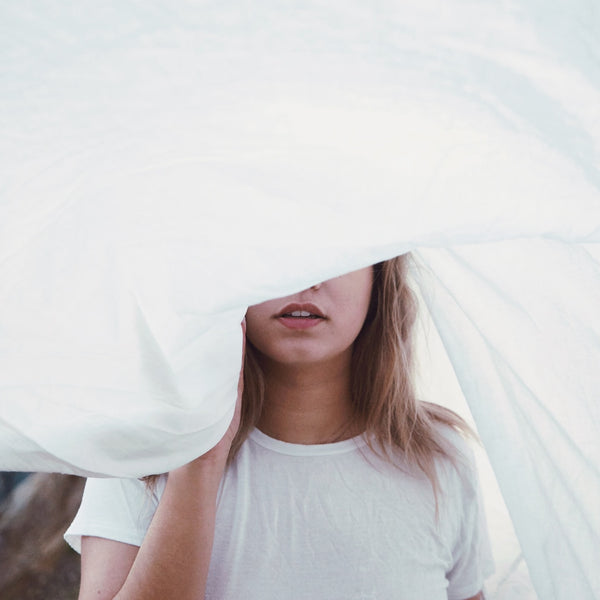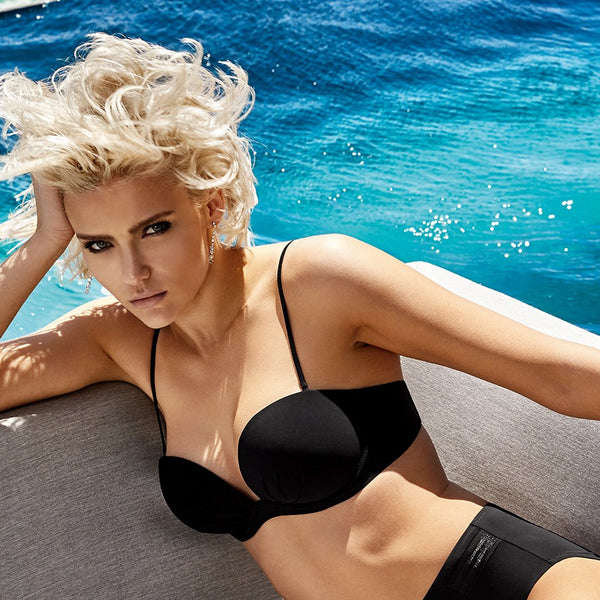17 / 03 / 2023
You’ve probably heard it before, but it’s true - a staggering 80% of us may be wearing the wrong size bra! Many of us wear a cup that’s too small and a back size that’s too loose, and these factors combine to make a bra that’s ill-fitting, misshapen and, most importantly, uncomfortable. So many women want to fling off their bras as soon as they step into their homes - but we’re here to tell you that it doesn’t need to be this way! Wires shouldn’t dig, back fat shouldn’t bulge, and cups shouldn't feel restricting. There are ways to minimise all bra discomforts, and the place to start is with the fit of the bra itself, and the size you’re opting for.
How is it so hard to work out our bra sizes?! Okay, so we might fluctuate through a size or two when we’re clothes shopping, but that’s likely to be it. Maybe you took the size 8 skirt to the changing room and need the size 10, or you opted for the size 20 blouse but actually need the 18…it’s probably as simple as that. Cuts might not suit us, and we might decide some styles just won’t flatter us, but it’s rarely the case that you will look at a whole rack of clothing and think, ‘I have no idea which of these will fit me’.
Why, then, do we sometimes feel like this when it comes to bras? With supposedly the magic combination of a singular number and a letter, we are supposed to be able to find the perfect bra fit - but how do we reach that golden point? And is it the same everywhere? What individualities of our own shape, or the cut of the bra, can have an impact on this?
This Juste Moi blog explores how to measure your own bra size, how your shape might impact your measurements, and how ‘Sister Sizes’ are the well-kept secret we think everybody should know about…
What do the numbers and letters mean?
Let’s start with the basics. The number is the measurement, in centimetres, of the band of your bra, which reaches right around your rib cage. The letter is the cup size - the volume of material in which your breasts sit in the bra. For example, 34C.

How to measure your band size
To measure your band size, you’ll need a soft tape measure and a comfortable bra that neither constricts your breasts nor boosts them. Pull the tape measure taut but comfortably around where the bottom of your bra band sits - a straight line around your rib cage, just beneath your breasts, and under your armpits. Look in a mirror to make sure the tape measure isn’t higher or lower at the back. Round this measurement to the nearest whole number, and add an inch if you've landed on an odd number (for example, if you land on 34 inches, that’s your band size, but if you land on 35, your band size is 36). This tells you your band size - for example, 30, 32, 34, 36, 38, etc. This, of course, is measured in inches! Some brands, especially European ones, offer centimetre measurements. For example, 73cm is the same as 34 inches.
How to measure your cup size
To measure your cup size, you’ll need to take your bust measurement, again with a soft tape measure. This time, measure around your chest by running the tape around your body at nipple level - the fullest part of your breasts. Again, check in the mirror that the tape isn’t dipping or riding up as it loops around your back.
When you have this figure, you’ll be able to calculate your cup size. Do this by subtracting your band size, as measured above, from your bust size. The difference in these figures tells you your cup size.
For example, if your band size is 34 inches and your chest measurement is 36 inches, the difference between these numbers is 2 inches, so your cup size is B.
Cup size calculations chart:
|
Difference (band measurement - cup measurement) |
Cup Size |
|
Less than 1 inch |
AA |
|
1” |
A |
|
2” |
B |
|
3” |
C |
|
4” |
D |
|
5” |
DD (E) |
|
6” |
DDD (F) |
|
7” |
G |
Sister Sizes
What if you’ve tried all this, and despite your efforts, you still seem to be stuck with ill-fitting bras? Well, the irritating truth is that there is no standard, one size fits all system. Different manufacturers produce bras that fit differently. What’s more, you may find that due to your breast shape, you need different sizes in different styles of bras. For example, for breasts that are less full at the top, a full cup design bra can seem baggy or empty, so you might need to size down - or pick a different design. Tweak your measurements to be precise using our Juste Moi bra fitting guide for more detailed information, too, for example on making sure your bra is the perfect fit.
This is where sister sizes come in. This is always a trick worth trying.
If you find you tend to wear your bra on the loosest hook, try the sister size up. If you’re always hooking to the tightest notch, try the sister size down. Although, it’s always a good idea to wear a new bra on the loosest hook, as it’s common that with use the tighter hooks will be those that you’ll
For example:
If you’re wearing a 32B, your sister size DOWN is the 30C, your sister size UP is the 34A.
If you’re wearing a 36D, your sister size DOWN is 34DD(/E), your sister size UP is 38C.
This blog, offering the inside track on bra measurements should set you on a course to find your perfect bra, and sister sizing should mean that you can always find a model that fits, whatever manufacturer you choose. Ready for a wardrobe refresh? Then take a look at the Juste Moi collection today.






